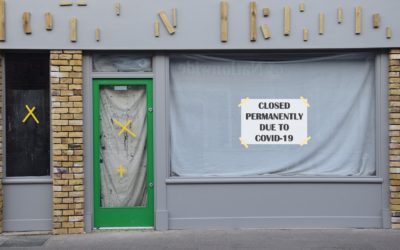Arrêté de Péril : the intervention of the bailiff

Contrary to the classic expulsion procedure, administrative decisions, and in particular municipal decrees of danger or insalubrity, are not subject to the provisions of article L411-1 of the Code of Civil Enforcement Procedures.
Indeed, the very wording of this article makes it possible to dispense with expulsion proceedings in the case of an eviction from a building following an order for danger or insalubrity.
Article L411-1 of the Code of Civil Enforcement Proceedings reads as follows:
Except where special provision is made, eviction from a building or inhabited place may be prosecuted only by virtue of a court decision or an enforceable conciliation report and after service of a summons to vacate the premises.
The special provisions relate specifically to the various decrees provided for in articles L511-1 and following of the Construction and Housing Code or the provisions of the Public Health Code (articles L1331-26 and following in particular).
As a reminder, we will specify here the different procedures available to the mayor of the municipality:
The ordinary peril procedure:
- the ordinary (non-imminent) danger procedure: when the danger is not immediate for the occupants, the mayor of the municipality issues an ordinary danger decree, ordering the owner to carry out the necessary work.
As a corollary to this order, the mayor may issue a temporary or permanent ban on living and the landowner will have to propose a relocation.
If the occupant refuses to accept three proposals for re-housing, if he or she remains on the premises, the owner must initiate a standard eviction procedure by bringing the matter before the local court. Indeed, the refusal of the re-housing proposals is a cause for termination of the lease.
Our study is well established in this particular case before the District Court.
The imminent peril procedure:
Contrary to the ordinary danger decree, this decree of the mayor of the municipality (or the prefect in case of default of the mayor) is issued when the building presents an imminent serious danger.
Note that as far as Paris is concerned, since the law of 28 February 2017 on the status of Paris, it is no longer the Paris Police Prefect who makes the danger orders, but the mayor.
This peril order is issued after the intervention of a legal expert appointed by the administrative court to which the mayor has referred the matter as a matter of urgency.
The Remediable Insalubrity Order and the Irremediable Insalubrity Order
When the town hall services are informed of a potential state of insalubrity, they deploy their communal hygiene and health service (SCHS) or a health inspector to visit the building and make a report, conclusive or not, on the insalubrity.
In municipalities with fewer than 20,000 inhabitants that do not have a SCHS or health inspector, it is the agents of a regional health agency (ARS) who carry out these procedures.
On the basis of the report, the prefect may issue a remediable insalubrity order, with a temporary ban on residence.
In the most serious cases, it may also issue an irrevocable insalubrity order, with a permanent ban on living.
In the event of a ban on living, if the occupant does not leave the premises by himself, the evacuation is again carried out by the Public Force.
Expulsion following an ordinary danger order, imminent danger order or an order of irremediable or irremediable insalubrity
In all these cases, it is not a procedure carried out by a bailiff BUT THE JUDICIAL HANDBOOK PARTICIPATES IN IT.
Indeed, article L542-1 of the code of construction and housing expressly provides for the intervention of the bailiff to establish a precise description of the movable objects which are evacuated, generally by the services of the town hall, in order to be stored in a safe place, so that the evacuated occupants can recover them there.
In practice, our study intervenes all over France at the request of town halls or prefecture, to establish these precise inventories, and we collect from each occupant a declaration relating to his intentions concerning the property thus moved. Indeed, it is not useful to keep property that the occupant wishes to abandon.
Our familiarity with this type of procedure allows us to minimize any problems. Thus, as soon as the inventory is taken, we make a valuation of the moved goods in order to justify, if necessary, their request for destruction. Indeed, at the end of the one-year period, if the occupant has not recovered his movable property, we refer the matter to the competent enforcement judge, in order to request the destruction of the property, or its sale by auction.
In the latter case, our office takes care of the auctioning of the goods throughout France, even if experience shows that in the vast majority of cases, only the worthless goods are not removed.
Our study is at the disposal of municipal services throughout France, and of all prefectural services, in order to provide its expertise in the delicate framework of the implementation of these procedures.
As a reminder, our contact details are
SCP LEROI WALD REYNAUD AYACHE TOMMASONE
BP 215
92002 NANTERRE CEDEX LA DEFENSE
TEL 0141376530
MAIL CONTACT@HUISSIERWEB.COM


